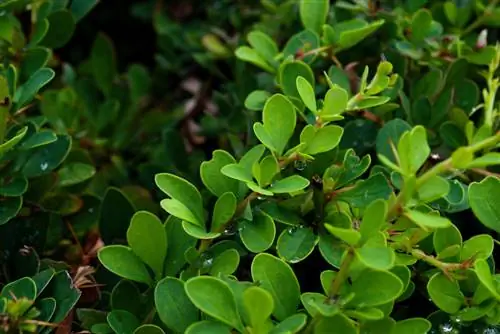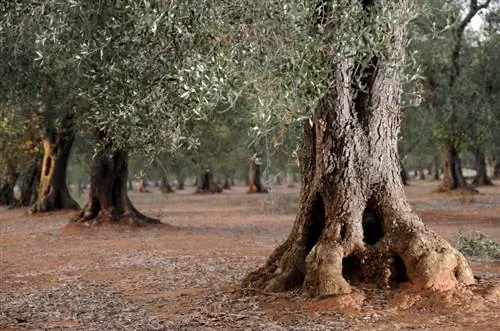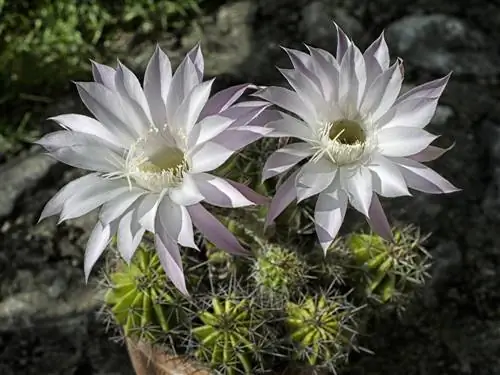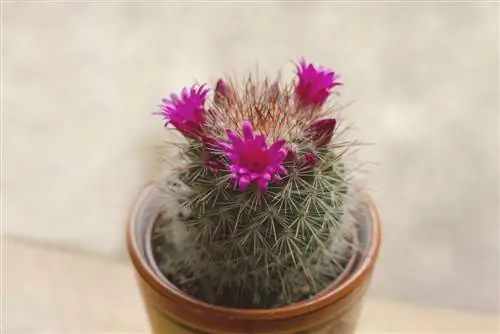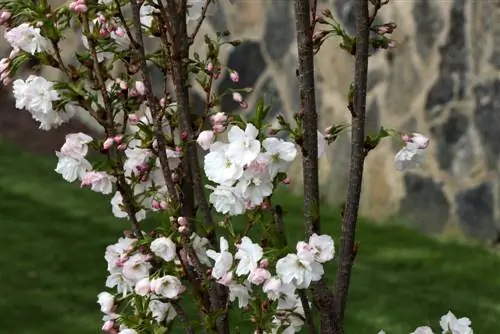- Author admin [email protected].
- Public 2023-12-16 16:46.
- Last modified 2025-01-23 11:21.
The genus of evergreen boxwood (Buxus) includes around 30 different species, two of which are particularly interesting for the home garden: the native boxwood and the small-leaved boxwood, which comes from Asia.
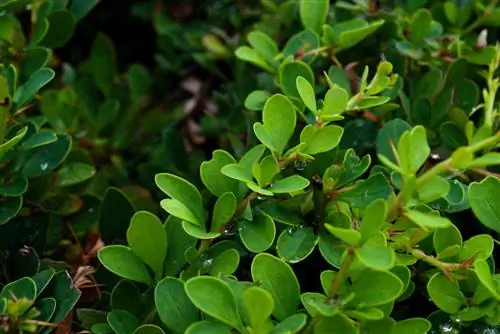
Which boxwood varieties are suitable for the garden?
Boxwood varieties for the home garden are the common boxwood (Buxus sempervirens), which is used for borders and figure cuts, and the small-leaved boxwood (Buxus microphylla), which is popular in Japanese gardens and is less sensitive to harmful fungi.
Common boxwood (Buxus sempervirens)
Buxus sempervirens has been cultivated for thousands of years: even the Neanderthals valued the shrub for its extremely hard wood, which could be used to make excellent grave sticks. In the Roman Empire, this type of boxwood was already a popular garden tree and was used, among other things, for borders. The Romans took the tree with them on their campaigns of conquest and introduced it from the Mediterranean region to other parts of Europe. However, the book's true career only began in the 16th century, when the gardeners of Versailles created artistic figures out of it.
| Variety | Growth rate | Growth width | Growth height | Leaves | Special features |
|---|---|---|---|---|---|
| Angustifolia | 15 to 20 centimeters / year | 80 to 100 centimeters | 100 to 120 centimeters | dark green | compact, for solitaires |
| Aurea | 5 to 10 centimeters / year | 40 to 150 centimeters | 50 to 200 centimeters | golden yellow | for hedges and solitary areas |
| Blue Heinz | 5 to 10 centimeters / year | 10 to 60 centimeters | 10 to 60 centimeters | teal | lowest variety |
| Elegantissima | 4 to 6 centimeters / year | 50 to 100 centimeters | 100 to 150 centimeters | dark green with creamy white edge | attractive leaf color |
| Green Gem | 5 to 10 centimeters | 40 to 60 centimeters | 60 to 80 centimeters | dark green | undemanding and robust |
| Handsworthiens | 10 to 25 centimeters / year | 100 to 200 centimeters | 200 to 300 centimeters | dark green | fast growing, for tall hedges |
| Marginata | 10 to 20 centimeters / year | up to 200 centimeters | up to 250 centimeters | with yellow border | fast-growing, for tall hedges |
| Rotundifolia | 10 to 20 centimeters / year | 250 to 350 centimeters | 250 to 400 centimeters | dark green | needs to be cut often |
| Suffruticosa | 3 to 5 centimeters / year | 30 to 60 centimeters | 50 to 100 centimeters | light green | for bed borders |
Small-leaved boxwood (Buxus microphylla)
Buxus microphylla, on the other hand, is widespread in Asia and is one of the traditional plants in a Japanese garden. The species is somewhat weaker than Buxus sempervirens and is also considered less sensitive to the harmful fungus Cylindrocladium buxicola, which causes the dreaded shoot death.
| Variety | Growth rate | Growth width | Growth height | Leaves | Special features |
|---|---|---|---|---|---|
| Faulkner | 5 to 15 centimeters / year | 100 to 200 centimeters | 100 to 200 centimeters | dark green | natural spherical shape |
| Herrenhausen | 8 to 15 centimeters / year | 50 to 70 centimeters | 30 to 60 centimeters | dark green | heat and drought tolerant |
Tip
For shape and figure cuts, you should use medium or strong growing varieties such as 'Globosa' and 'Rotundifolia'.

